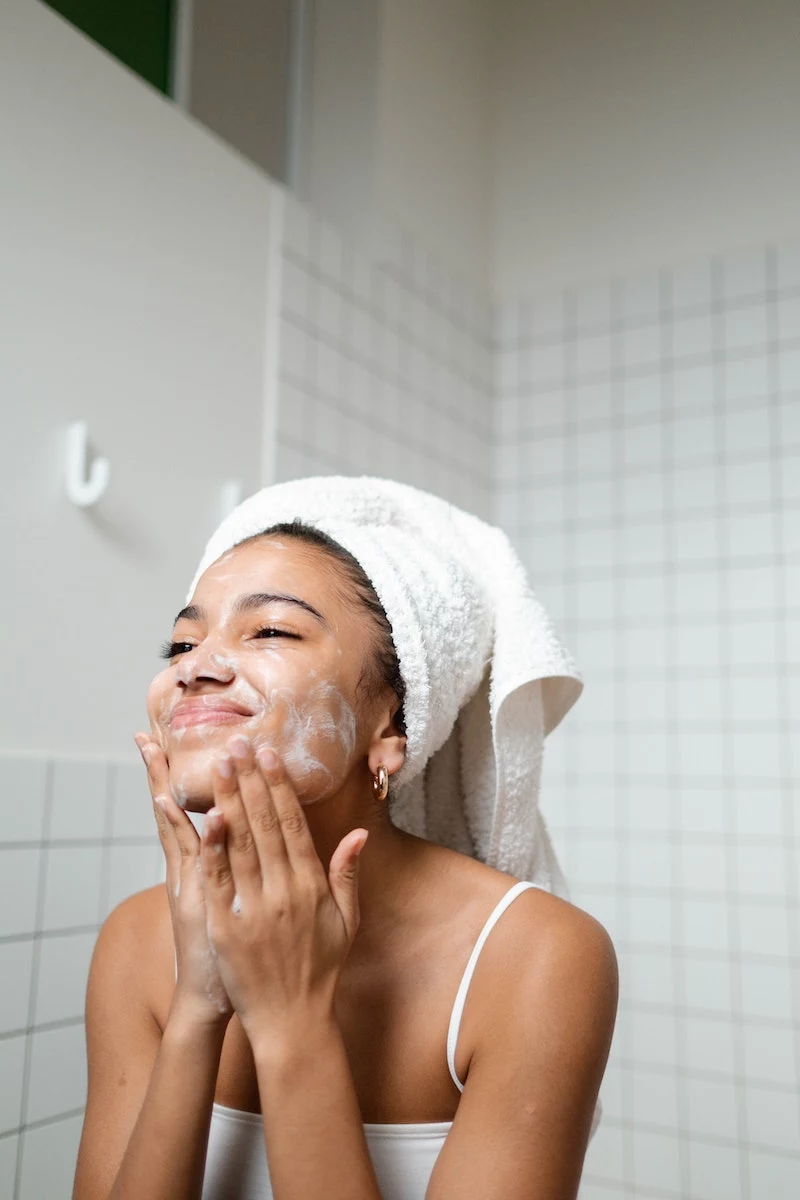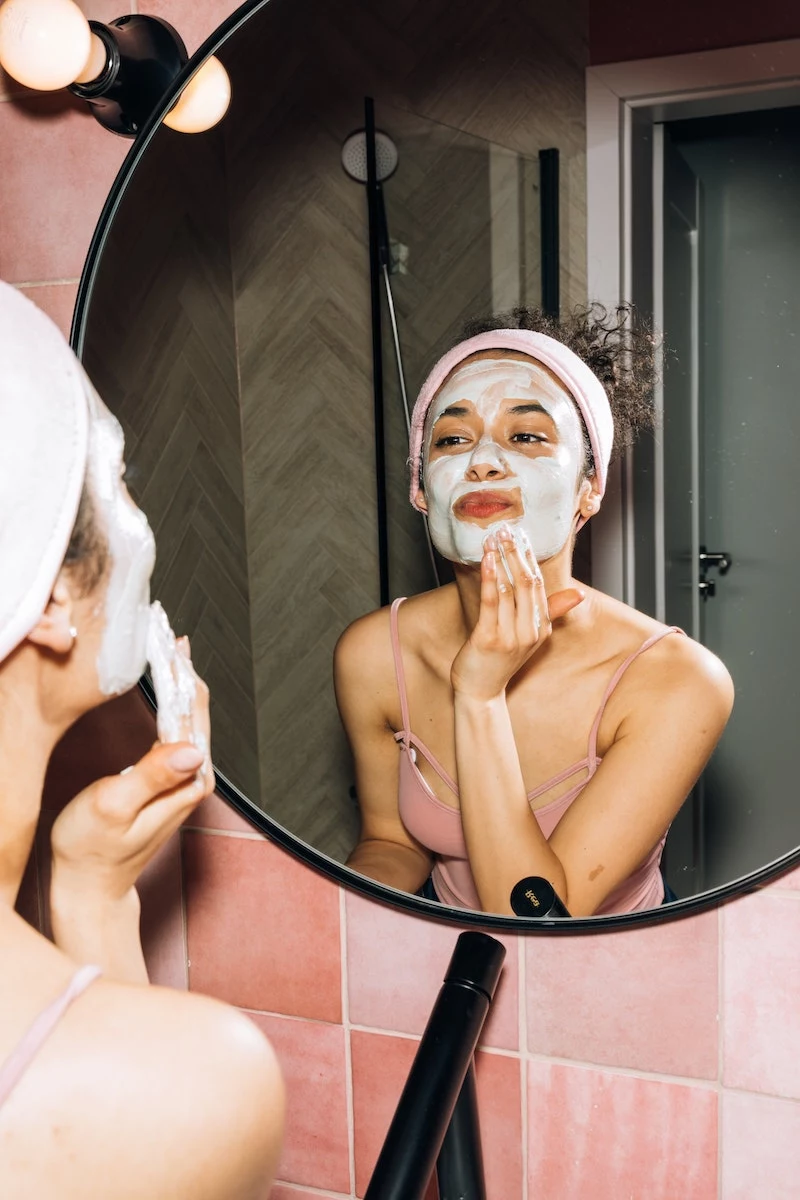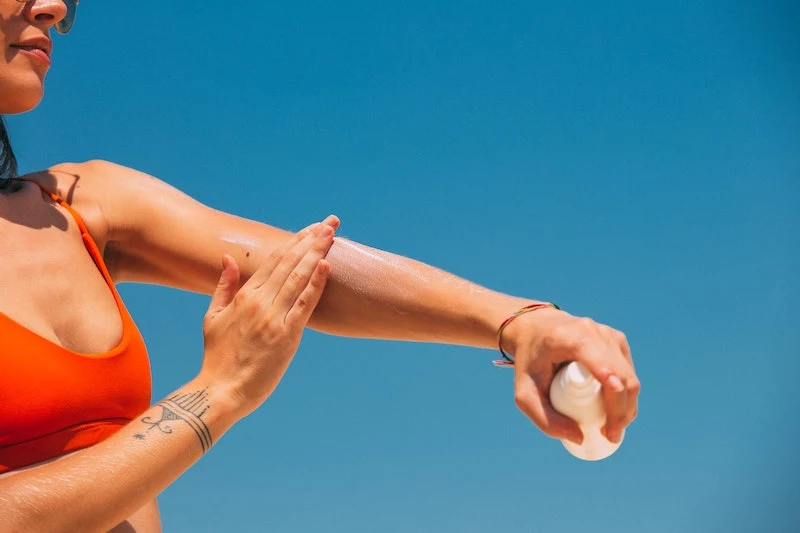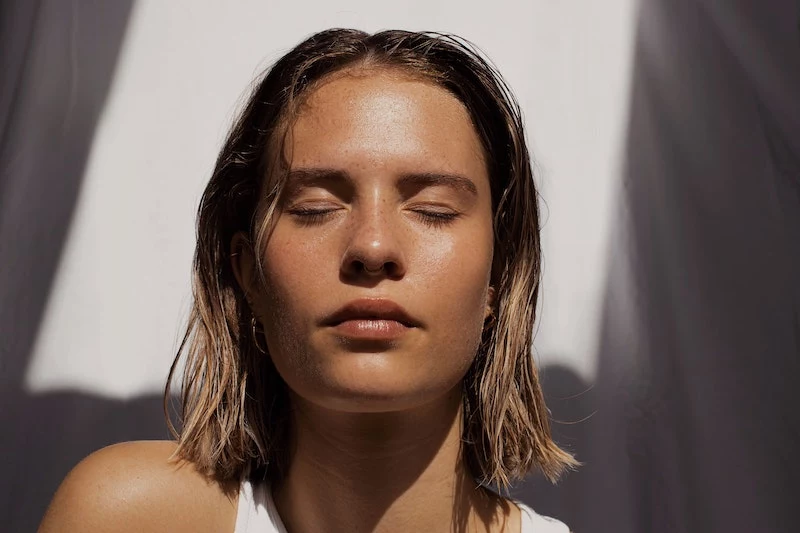Your Forever Skincare Plan: A Pro’s Guide to Healthy Skin (No Magic Potions Required)
Alright, let’s talk skin. After many years as a licensed esthetician, I’ve seen it all. I’ve watched countless trends and so-called miracle ingredients flash across social media and then disappear. But the truth about getting good skin? It has never, ever changed. It’s not about hunting for a single magic potion. It’s about consistency and building a smart routine that actually works for you.
In this article
So many people come to me looking for an “anti-aging” plan, but honestly, I’m not a fan of that term. I prefer to call it a “healthy-aging” strategy. We can’t stop the clock, but we can absolutely support our skin so it’s vibrant and resilient, no matter our age. This isn’t about looking 20 forever; it’s about having great skin for life. This is the stuff I talk about every single day in my treatment room.
First Things First: Know What You’re Working With
Before you even think about buying a single product, it helps to understand what’s going on under the surface. Skin aging boils down to two main things. Once you get this, you’ll feel so much more in control.

The Internal Clock (The Stuff You Can’t Change)
This is the natural aging process your genes have mapped out for you. Starting in our mid-20s, our bodies just get a little… slower. The production of collagen, which is like the scaffolding that keeps skin firm, starts to decline. The same goes for elastin, the protein that gives skin its bouncy, snap-back quality. On top of that, cell turnover—the skin’s natural exfoliation process—gets sluggish. This can lead to a duller, rougher-feeling complexion.
And yeah, you can’t stop your genetic clock. This is just biology. But here’s the good news: this internal process is only a tiny piece of the puzzle. The real magic happens when we tackle the external factors.
The Environmental Impact (The Stuff You CAN Change)
This is where you have all the power. Extrinsic aging comes from your lifestyle and environment, and the number one cause of looking older than you are is, without a doubt, the sun. I once had a client who drove a truck for a living. The left side of his face, which was exposed to the sun every day through his window, had deep wrinkles and sunspots. His right side looked a full decade younger. That’s the power of the sun, right there.

This kind of damage is called photoaging. Basically, UV rays create these nasty little molecules called free radicals in your skin. Think of them as tiny pinballs, bouncing around and damaging your healthy cells, collagen, and DNA. This directly leads to sagging, wrinkles, and brown spots. Other things like pollution and smoke create free radicals, too. Our job is to build a defense against this daily assault.
The 3 Non-Negotiables of Any Solid Routine
A great skincare routine doesn’t need ten steps. In fact, one of the first things I often do with a new client is to strip their routine way back to the basics. You need to nail the fundamentals before you get fancy.
Pillar 1: Cleansing
The whole point of washing your face is to remove dirt, oil, makeup, and pollution so your other products can actually work. It’s less about how much you spend and more about how you do it.

Pro Tip: Use lukewarm water—hot water strips your natural oils and can lead to irritation. Spend a full 60 seconds gently massaging the cleanser into your skin. I’m serious, time it! This gives the ingredients time to actually do their job. Then, rinse well and gently pat your face dry with a clean towel. Never, ever rub. Over time, that friction can stretch the skin.
Choosing a Cleanser:
- For Dry or Sensitive Skin: Go for a cream or milky cleanser. They’re gentle and won’t leave you feeling tight. I often recommend things like the La Roche-Posay Toleriane Hydrating Gentle Cleanser or CeraVe Hydrating Facial Cleanser. You can find them at most drugstores for about $15-$20.
- For Oily or Acne-Prone Skin: A gel or light foam cleanser will be your best friend. They cut through oil without being overly harsh.
- For Normal or Combo Skin: You’ve got options. A gentle foaming cleanser usually hits the sweet spot.
Heads up! Your skin should NEVER feel tight or “squeaky clean” after washing. That feeling is a major red flag that your cleanser is too strong and has damaged your skin’s protective barrier. A healthy barrier is everything—it keeps moisture in and irritants out.

Pillar 2: Moisturizing
Moisturizer does way more than just feel nice. It maintains that skin barrier we just talked about, locks in hydration, and protects you. And yes, even oily skin needs a moisturizer. Depriving oily skin of moisture can actually make it produce more oil to compensate.
Want one thing you can do TODAY to make your skin better? Apply your moisturizer to slightly damp skin tonight. Just pat your face mostly dry after cleansing, then immediately apply your moisturizer. It traps that extra water against your skin and makes the product way more effective. Easy!
Choosing a Moisturizer:
- For Dry Skin: You’ll want a thicker cream with ingredients like ceramides and shea butter.
- For Oily Skin: Look for something lightweight, like an oil-free lotion or a gel cream. A heavy cream will just feel greasy and might clog your pores.
- For Combo Skin: Sometimes, the pros use two different products. You could use a lighter lotion on your oily T-zone and a richer cream on your drier cheeks.
Pillar 3: Sun Protection (The Real Game-Changer)
If you do only one thing for your skin, please, let it be this. Sunscreen is the most powerful and effective tool you have. It prevents wrinkles, brown spots, and, most importantly, skin cancer. Think of it as a health product first, and a beauty product second.
A common hurdle I see is that people hate how sunscreen feels. I had a client who refused to wear it for years until we found a formula she didn’t despise. She ended up falling in love with a super-lightweight Korean sunscreen that felt more like a moisturizer. The best sunscreen is the one you’ll actually wear every single day.

What to Look For:
- Broad Spectrum: This is non-negotiable. It means it protects from both UVA (aging) rays and UVB (burning) rays.
- SPF 30 or Higher: The pros recommend at least SPF 30 for daily use. If you’ll be outside for a long time, bump it up to SPF 50.
- The Right Amount: Most people use about a quarter of the sunscreen they should. For your face alone, you need a nickel-sized blob. A great visual is the “two-finger rule”—squeeze a line of sunscreen down your index and middle fingers. That’s the right amount for your face and neck. Apply it as the very last step of your morning routine, before any makeup.
Level Up: Adding the “Actives”
Once you’ve got your cleanse-moisturize-sunscreen routine down pat for a few weeks, you can start to add a treatment product. We call these “actives” because they contain ingredients that actively create change in your skin, targeting things like fine lines, dark spots, or loss of firmness.
CRUCIAL SAFETY TIP: Introduce only ONE new active at a time. And before you slather it all over your face, do a patch test. Here’s how:
- Apply a tiny bit of the new product to a discreet spot, like behind your ear or on your inner wrist.
- Do this once a day for about three days.
- If you don’t see any significant redness, crazy itching, or bumps, you’re probably good to go.
This little step can save you from a full-face freak-out. If you add five new things at once and have a reaction, you’ll have no idea what caused it.
Retinoids (The Gold Standard)
Retinoids (the big family that includes retinol) are the most proven and studied ingredients for improving skin texture and signs of aging. They work by kicking cell turnover into high gear and stimulating collagen. The result? Smoother skin, fewer lines, and more even tone.
The Retinoid Family, Explained:
- Prescription-Strength: This is the most powerful stuff, only available from a doctor.
- Retinal (or Retinaldehyde): This is the strongest you can get over the counter. It’s pretty potent.
- Retinol: This is the most common OTC form. It’s a bit gentler because it takes an extra step to convert in the skin, making it a great place to start.
How to Start: Go low and slow. Start with a low-concentration retinol (around 0.25% or 0.3%) and use it just twice a week, at night. You can even try the “retinoid sandwich” method: apply a thin layer of moisturizer, wait a few minutes, apply a pea-sized amount of your retinoid, wait again, and then top it with more moisturizer. This buffers the product and reduces irritation.
What to Expect (The “Retinization” Phase):
- Weeks 1-2: You might not notice much, or maybe just some mild dryness.
- Weeks 3-4: Okay, here it comes. You might experience peeling, sensitivity, and even some new pimples (this is called “the purge”). HANG IN THERE. This is totally normal and a sign that it’s working.
- Weeks 5-8: Things should start to calm down. Your skin will begin to look smoother and feel more adjusted.
Because retinoids make your skin more sun-sensitive, daily sunscreen use is absolutely mandatory. No exceptions!
Antioxidants (Like Vitamin C)
If retinoids are your nighttime MVP, Vitamin C is your daytime superstar. It’s a powerful antioxidant that acts like a shield, protecting your skin from those pesky free radicals caused by the sun and pollution. As a bonus, it also helps brighten your skin tone.
The most effective form is L-Ascorbic Acid, but it’s famously unstable. It breaks down when it’s exposed to light and air. So, if your Vitamin C serum turns dark orange or brown, it has oxidized and lost its power—time for a new bottle! To make it last, store it in a cool, dark place.
Apply it in the morning to clean skin, right before your moisturizer and sunscreen. It actually works together with your sunscreen to give you even better protection. A good serum is an investment—expect to pay anywhere from $30 to over $100—but a well-formulated one can deliver truly visible results.
Exfoliating Acids (For Glow and Clarity)
As our natural exfoliation slows down, dead cells can build up and make skin look dull. Chemical exfoliants gently dissolve the “glue” holding those old cells, revealing the brighter, smoother skin underneath.
Think of them in two main groups:
- AHAs (Alpha Hydroxy Acids): These are water-soluble, so they work on the surface of your skin. Glycolic and lactic acid are popular AHAs. They’re fantastic for improving texture, fine lines, and dullness. Lactic acid is a bit gentler, making it great for more sensitive types.
- BHA (Beta Hydroxy Acid): This is pretty much just salicylic acid. It’s oil-soluble, meaning it can get down inside your pores to clear out gunk and oil. This makes it the top choice for oily, acne-prone skin and for making pores look smaller.
By the way, one of the biggest mistakes I see is over-exfoliation. People get hooked on that smooth feeling and use acids way too often, leaving their skin red, shiny, and irritated. You only need to exfoliate one to three times a week, tops. And it’s usually best not to use an acid on the same night as a retinoid, especially when you’re starting out.
Building Your Routine: A Simple Plan
Don’t overcomplicate it. Here’s a basic roadmap:
Beginner Routine (First 4-6 Weeks)
- Morning: Gentle Cleanser, Moisturizer, Sunscreen (SPF 30+).
- Evening: Gentle Cleanser, Moisturizer.
Intermediate Routine (Once Your Skin is Happy)
- Morning: Gentle Cleanser, Vitamin C Serum, Moisturizer, Sunscreen (SPF 30+).
- Evening: Alternate nights. For example:
- Night 1 (e.g., Mon/Wed/Fri): Gentle Cleanser, Retinoid, Moisturizer.
- Night 2 (e.g., Tue/Thu/Sat): Gentle Cleanser, Moisturizer. (Give your skin a break!)
- Sunday: On one of your off-nights, you could use an exfoliating acid if that’s a priority for you.
And remember to be patient. It takes 3-6 months to see real, significant changes from actives like retinoids. Consistency is everything.
When to Call in the Experts
A great home routine is powerful, but sometimes you need a pro. It’s good to know who to see for what.
See an Esthetician for:
- Getting help building a personalized routine.
- Professional treatments like facials and light chemical peels.
- Guidance on product use and addressing things like dullness or mild texture.
See a Board-Certified Dermatologist for:
- Your annual skin cancer screening. This is non-negotiable for every single person.
- Prescription meds for things like cystic acne, rosacea, or eczema.
- Getting any new or weird-looking spots checked out.
- Advanced cosmetic procedures.
Ultimately, taking care of your skin is a marathon, not a sprint. Be patient with yourself, stay consistent, and never, ever skip the sunscreen. I promise you, the results are worth it.
Inspirational Gallery
According to the Skin Cancer Foundation, daily use of an SPF 15 or higher sunscreen reduces the risk of developing melanoma by 50 percent.
This isn’t just for beach days. The incidental sun exposure you get walking to your car or sitting near a window adds up. Making a broad-spectrum sunscreen, like the light-as-air La Roche-Posay Anthelios UVMune 400, the final step of your morning routine is the single most effective ‘anti-aging’ decision you can make.
The Golden Rule of Layering: Go from thinnest to thickest texture. This ensures that the potent, smaller-molecule products (like serums) can penetrate the skin effectively before being sealed in by richer creams. A typical evening order looks like this:
- Oil or Balm Cleanser (to remove makeup/SPF)
- Water-based Cleanser
- Toner or Essence (if you use one)
- Treatment Serum (e.g., retinol or peptides)
- Eye Cream
- Moisturizer
I have sensitive skin. Is retinol off the table for me?
Not at all! You just need a smarter approach. Start with a low-concentration formula (0.01% to 0.03%) and use it only twice a week. Try the ‘sandwich’ method: apply a thin layer of simple moisturizer, let it absorb, apply your retinol, wait, and then apply another layer of moisturizer. This buffers the active ingredient, reducing potential irritation while still delivering results. Brands like CeraVe and The INKEY List offer excellent gentle retinol options to begin your journey.
An important note on actives: More is not always better. Combining powerful ingredients like retinoids with AHAs/BHAs (like glycolic or salicylic acid) and Vitamin C in the same application can lead to over-exfoliation, irritation, and a compromised skin barrier. Instead, alternate them. Use Vitamin C in the morning and your retinol or acid at night—never together.
The ritual of skincare can be as beneficial as the products themselves. Take the double cleanse, for instance. There’s a profound satisfaction in massaging an oil cleanser, like the cult-favorite from DHC, onto your face, feeling the day’s grime, makeup, and sunscreen literally melt away. The warm cloth that follows, and the final fresh-scented lather of a gel cleanser, isn’t just a chore; it’s a mindful transition that signals the end of the day and a moment of care just for you.
- A brighter, more even skin tone.
- Visibly minimized pores.
- Reduced inflammation and redness.
- A stronger, more resilient skin barrier.
The do-it-all ingredient responsible? Niacinamide. This form of Vitamin B3 is a true team player, well-tolerated by most skin types and easy to incorporate into any routine. You can find it in serums like The Ordinary’s Niacinamide 10% + Zinc 1% or within moisturizers from brands like Olay Regenerist.
In the world of skincare, the term “clean” has no official or regulated definition.
While the movement has pushed brands toward more transparency, it’s crucial to look beyond the marketing buzz. A product labeled “clean” isn’t inherently safer or more effective. Focus on well-researched ingredients at clinically proven concentrations and formulas that are stable and packaged to protect their integrity. Great skin is built on science, not just natural-sounding claims.
Vitamin C Serum Showdown: L-Ascorbic Acid vs. THD Ascorbate
L-Ascorbic Acid (L-AA): The most researched and potent form of Vitamin C. It delivers powerful antioxidant benefits but is notoriously unstable, oxidizing quickly when exposed to air and light. SkinCeuticals C E Ferulic is the gold standard.
THD Ascorbate: A more stable, oil-soluble derivative. It’s less likely to cause irritation and penetrates deeper into the skin, though it’s often found in pricier formulas. A great example is the Sunday Riley C.E.O. 15% Vitamin C Brightening Serum.
For proven power, choose L-AA; for sensitive skin or a more elegant texture, THD Ascorbate is a fantastic choice.
Feeling overwhelmed by all the steps? Consider ‘Skin Cycling,’ a term coined by dermatologist Dr. Whitney Bowe. It’s a four-night cycle that builds in recovery, preventing irritation:
- Night 1: Exfoliation (with an AHA/BHA)
- Night 2: Retinoid
- Night 3 & 4: Recovery (focus on hydration and barrier repair with simple, soothing moisturizers)
Then, you repeat the cycle. It’s a perfect strategy for achieving consistency without overdoing it.
Your neck and hands often show signs of aging faster than your face.
Why? The skin is thinner and has fewer oil glands, and these areas are often neglected in our daily routines. Make it a non-negotiable habit: whatever you apply to your face—serums, moisturizers, and especially sunscreen—bring it all the way down your neck and onto the backs of your hands.










